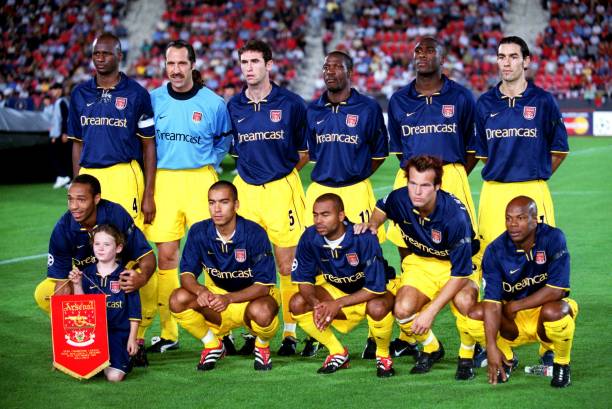In a match that was anything but ordinary, Arsenal’s visit to Stamford Bridge has become the talk of the town, not just for the on-field spectacle but for the repercussions that followed. The game, which ended in a draw, has been a focal point for discussions, debates, and analysis across various platforms. Let’s delve into…Continue reading Arsenal’s Draw at Chelsea: A Deep Dive
UEFA Sanctions Atletico After Arsenal Clash
UEFA’s Decision on Atletico Madrid In a move that reverberated through the football community, UEFA has taken a firm stance against Atletico Madrid, imposing sanctions on the Spanish club for the behavior of its fans during the recent clash against Arsenal. The incident, which caught the attention of football authorities and fans alike, has sparked…Continue reading UEFA Sanctions Atletico After Arsenal Clash
Arsenal Star Shines in Team of the Week
In a week where football narratives have been dominated by fixtures, injuries, and off-field dramas, one story that stands out for its sheer positivity is that of an Arsenal player’s resounding success. This week, the football world turned its eyes towards an individual achievement that not only reflects personal excellence but also highlights Arsenal’s influence…Continue reading Arsenal Star Shines in Team of the Week
Arsenal’s Youth Strategy Under Scrutiny
In the world of football, the development and nurturing of young talent are as crucial as managing the first team’s tactics on match day. Recent reports surrounding a Manchester United teenager’s mentality check following his transfer from Arsenal have brought the Gunners’ youth strategy back into the limelight. This incident not only raises questions about…Continue reading Arsenal’s Youth Strategy Under Scrutiny
Arteta on Saka’s Contract Saga
In the bustling world of football, where the transfer market and contract negotiations often dominate headlines as much as the action on the pitch, Arsenal finds itself at the center of a compelling narrative. Amidst speculation and fervent discussions among fans and pundits alike, Mikel Arteta, the mastermind behind Arsenal’s recent resurgence, has finally broken…Continue reading Arteta on Saka’s Contract Saga
Kolo Muani’s Masked Prep for Arsenal
Tottenham Spurs Gear Up for Arsenal Clash In a remarkable display of resilience and determination, Tottenham Hotspur’s forward, Randal Kolo Muani, has taken to the training ground donning a specially fitted mask, a decision made in light of a recent jaw injury. The move comes ahead of a highly anticipated match against Arsenal, setting the…Continue reading Kolo Muani’s Masked Prep for Arsenal
Arsenal’s Latest Moves and Buzz
In the ever-evolving world of football, Arsenal Football Club, affectionately known as the Gunners, remains at the forefront of headlines, sparking debates and discussions among fans and experts alike. The recent developments surrounding the team have provided much fodder for analysis, from potential defensive reinforcements to off-the-pitch partnerships. Let’s delve into the heart of these…Continue reading Arsenal’s Latest Moves and Buzz
Arsenal’s Latest Transfer Battles
In the ever-evolving landscape of English football, Arsenal Football Club, affectionately known as ‘the Gunners’, finds itself in a fervent scramble for talent that could redefine their standing in both domestic and European competitions. As the transfer rumors swirl with increasing intensity, the North London outfit is reportedly setting its sights on a high-profile target,…Continue reading Arsenal’s Latest Transfer Battles
Arsenal’s Latest Triumph
In the ever-evolving landscape of English football, Arsenal Football Club, affectionately known as ‘the Gunners’ by their legion of fans, have once again made headlines, cementing their status as one of the Premier League’s most formidable forces. While the specifics of their latest triumph remain shrouded in the competitive nature of sports journalism, the essence…Continue reading Arsenal’s Latest Triumph
Madueke’s Arsenal Debut Delayed
In the ever-evolving landscape of English football, where the line between success and obscurity is both fine and unforgiving, Arsenal Football Club, affectionately known as the Gunners, find themselves once again at the center of attention. This time, the spotlight shines not on a resounding victory or a high-profile signing, but on a decision that…Continue reading Madueke’s Arsenal Debut Delayed









